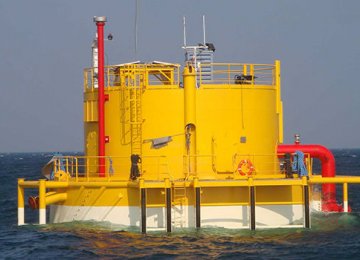New loading facilities have been installed off the coast of Asaluyeh in southern Bushehr Province to enhance export of gas condensates via large vessels.
"Very large crude carriers (VLCCs) of up to 320,000 tons deadweight can now anchor at three single point mooring buoys off the coast of Asaluyeh to load condensates," said Iraj Ghavami, head of Asaluyeh Gas Condensates Export Terminal, National Iranian Oil Company news portal reported on Saturday.
Gas condensate is a liquid hydrocarbon that forms in association with natural gas. Although it is extracted from gas fields, condensate is typically classified and marketed as a type of sweet, ultra light crude oil.
Iran mainly draws condensates from South Pars, the world's largest gas field that it shares with neighboring Qatar in the Persian Gulf.
Asaluyeh is one of Iran's biggest hubs for export of oil, gas and petrochemical products. It also provides fuel bunkering services, facilities for storing oil products and refueling ships.
According to Ghavami, the three buoys, also known as single buoy mooring (SBM), have a loading capacity of 5,200 cubic meters per hour, or close to 125,000 cubic meters a day. He did not say when the offshore loading facilities were installed.
SBM is a loading buoy anchored offshore that serves as a mooring point for tankers loading or offloading gas or liquid products. They are capable of handling ships of any size, even VLCCs, where no alternative facility is available.
Some types of SBMs comprise a fluid transfer system that enables connection of subsea pipelines and extraction facilities to the tanker. SBMs are used to load and unload crude oil and refined products from inshore and offshore oilfields or refineries, usually through some form of storage system.
Ghavami also said that an advanced metering system is being used at the condensates export terminal in Asaluyeh which makes the facility one of the most advanced of its kind in the Middle East in terms of measurement.
Following the lifting of international sanctions in mid-January, Iran has expanded its oil export facilities in the Persian Gulf and increased production at a faster pace than most analysts had expected.
Officials say export of crude oil and gas condensates have exceeded 2.5 million barrels a day.
Iran's top four Asian buyers, China, India, South Korea and Japan, imported 1.99 million bpd of crude in October, up 147.9% on year, International Energy Agency said this week, using government and ship-tracking data.











Add new comment
Read our comment policy before posting your viewpoints